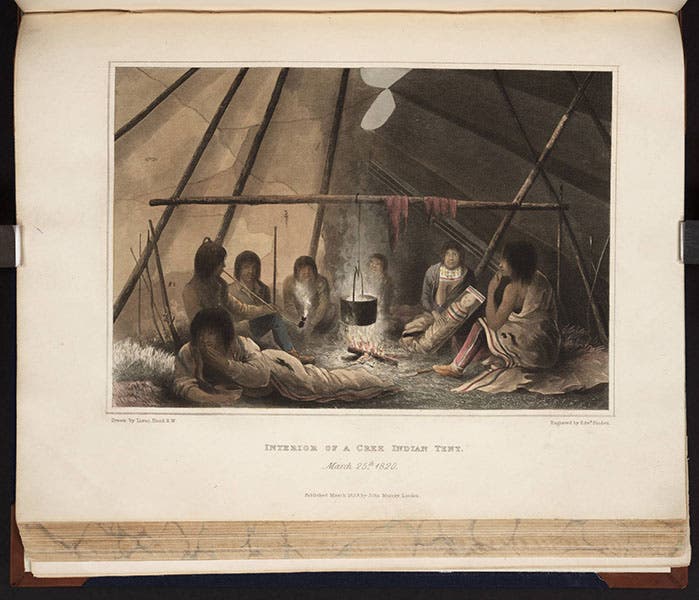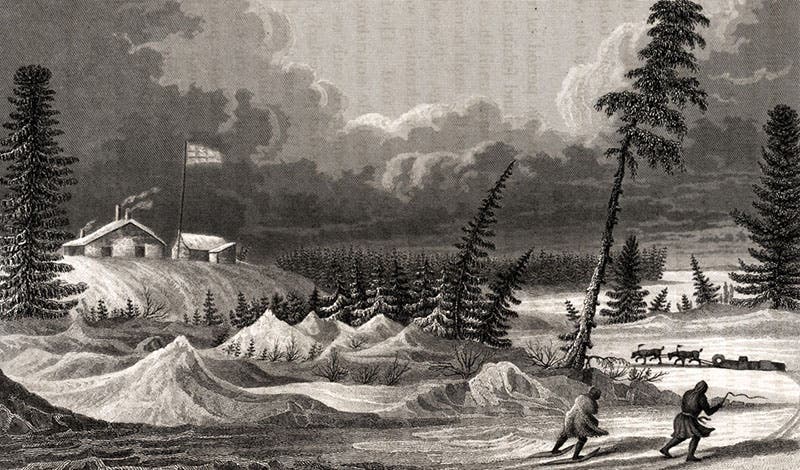Scientist of the Day - John Franklin
John Franklin, a British naval explorer, was born Apr. 16, 1786. Franklin is best known for the ill-fated Franklin expedition, which left England in 1845 in search of a Northwest Passage, and was never seen again. We now know that Franklin died on June 11, 1847, the rest of his crew perished not long after, and his ships, the Erebus and Terror, disappeared beneath the ice. But the fate of the Franklin expedition was not known until 1859, so a number of ships went lookings for Franklin from 1849 on. We devoted an entire section of our 2008 exhibition, Ice: A Victorian Romance, to the search for Franklin.
Lost in the glare of the Franklin expedition of 1845 are two remarkable overland journeys that Franklin undertook 20 years earlier, in attempts to map the Arctic coastline by trekking north through the territory of the Hudson's Bay Company. The first journey, from 1819 to 1822, was a near disaster, as he lost many of his party, and one officer was murdered by a voyageur. Nevertheless, they did descend the Coppermine River to the Arctic coast and were able to explore eastward for quite a distance; it was on the return trip that they nearly starved to death. When Franklin returned home (eleven of the party of 20 did not return), he wrote an account of their adventures and misadventures, which was published in 1823. The book has beautiful illustrations, most of them by one of the lieutenants, George Back. We show four of them here.
Franklin's second overland expedition, from 1825 to 1827, was more successful, surveying over 1200 miles of the Arctic coastline in small ocean-going boats built for the purpose in England. Franklin also published a narrative of this expedition in 1828; we show two images here from that account. For more detail on each expedition, you may consult the exhibition catalog, Ice: A Victorian Romance, where we exhibited Narrative of a Journey to the Shores of the Polar Sea (1823), and Narrative of a Second Expedition (1828).
The surgeon and naturalist on both of Franklin’s overland expeditions was John Richardson. We featured Richardson as our Scientist of the Day in 2015. In 1848-9, Richardson led one of the first expeditions in search of Franklin, up the Mackenzie River and across to the Coppermine.
It is more than a little ironic that Franklin, an officer of the British Navy, would survive against all odds on his two land expeditions, and then encounter disaster at sea.
Dr. William B. Ashworth, Jr., Consultant for the History of Science, Linda Hall Library and Associate Professor, Department of History, University of Missouri-Kansas City. Comments or corrections are welcome; please direct to ashworthw@umkc.edu.











